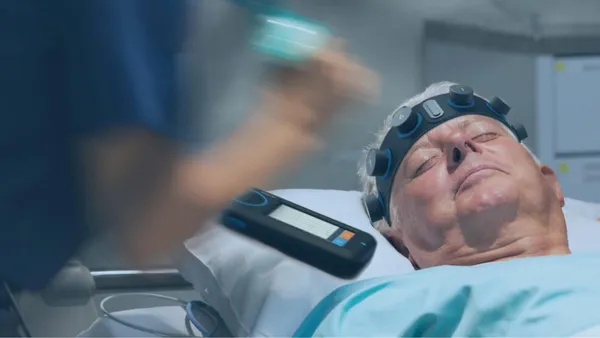Dive Brief:
- Medtronic released three-year registry data Friday indicating its Heli-FX EndoAnchor system is durable, safe and effective in a subset of patients with aortic abdominal aneurysms (AAA) who are difficult to treat due to complex anatomies.
- The data showed the implantable EndoAnchor helps secure endovascular stent grafts in place in patients with a condition called hostile infrarenal AAA, which is an aneurysm in the section of the aorta below the kidneys that can be especially hard to treat if a patient has a challenging aortic neck shape.
- A high percentage of registry patients were free from aneurysm-related mortality and secondary procedures to treat a leakage issue at three years. The post-market data from the Anchor registry were presented at a meeting of vascular surgeons, interventional cardiologists and other specialists called the VEITHsymposium.
Dive Insight:
Abdominal aortic aneurysms have been called a "silent killer" because patients often have no symptoms until the aneurysm bursts. The aneurysm is a bulging, weakened area in the wall of the aorta, the main artery from the heart leading into the iliac arteries of the pelvis that take blood to the lower extremities.
Endovascular stent placement, an alternative to open surgical repair, is increasingly used to treat AAA, cited as the 13th leading cause of death in the United States by the Cleveland Clinic and other sources. Most of these aneurysms form in the segment of the abdominal aorta below the kidneys. The larger the aneurysm is, the greater the risk of a life-threatening rupture of the aorta if left untreated.
Medtronic said more than 800 AAA patients treated with its Heli-FX system, primarily in combination with its own endovascular stent grafts or those manufactured by Gore, Cook and Jotec, were enrolled in the Anchor registry. In the procedure, a minimally invasive catheter-based system was used to implant a stent graft in the aorta that directs blood flow away from the aneurysm to prevent rupture.
The majority of patients in the registry received EndoAnchor implants prophylactically, while a smaller group received them following a previously failed endovascular repair. Patients in the prophylactic group had short, hostile anatomies with an average neck length of 11.2mm, and those in the therapeutic revision group had an average neck length of 10.2mm.
At three years, freedom from aneurysm-related mortality, based on Kaplan-Meier estimates, was 98.3% in the prophylactic group and 91.1% in the revision group. Freedom from secondary procedures to treat Type Ia endoleak, based on Kaplan-Meier estimates, was observed in 98.7% of prophylactic patients and 86.3% of revision patients.
Positive sac stability and regression, despite hostile anatomy characteristics, was seen in 96.5% of prophylactic patients and 80% of revision patients.
"Hostile aortic necks are frequently seen in clinical practice and have historically presented challenges for physicians treating patients through an endovascular approach. With these data, we are continuing to validate that by using Heli-FX in these challenging cases, we have the ability to successfully treat this critical patient population and expand applicability of EVAR to those with complex aortic anatomies," William Jordan Jr. of Emory University School of Medicine, co-principal investigator of the Anchor registry, said in a press release.











